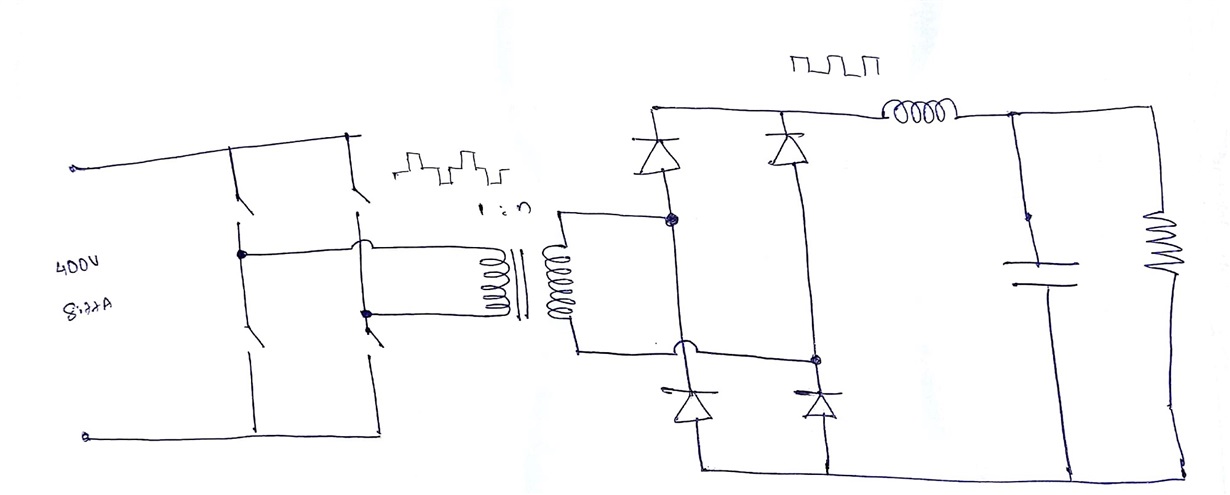Other Parts Discussed in Thread: TIDA-00200
Hi,
I am designing a 60V, 3.3kW Full bridge DC-DC converter for building a Li-ion battery charger. I am using UCC28950 Phase-Shifted Full-Bridge Controller for controlling the primary side MOSFET's. I am using the following configuration of full bridge converter as shown in the figure.
I would like to get an expert opinion on some of the queries that I have:
1) What are the factors that will affect the core saturation of the transformer? Does duty cycle of primary input signal play any role in saturation since its an AC waveform?
2) I would like to implement the CC-CV charging technique. Can I use the feedback circuit that is given in TIDA-00200 application note to achieve CC-CV charging with UCC28950 Controller?
3) Does the Load current affect the ZVS operation of primary side MOSFETs?
4) Apart from reducing losses what are the advantages if I use a center-tap secondary with only 2 rectifier diodes other than Bridge rectifier in the secondary side?
5) How will the leakage inductance of the Transformer affect the ZVS operation?


